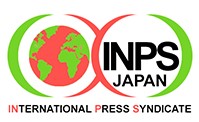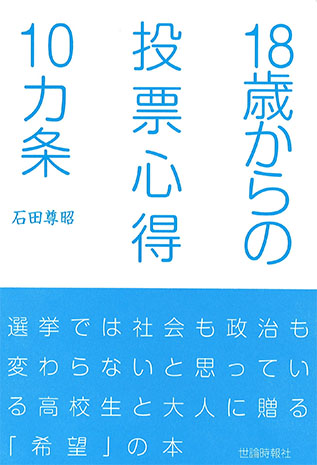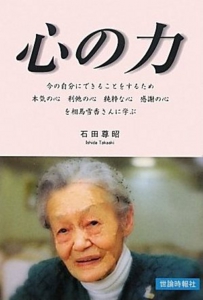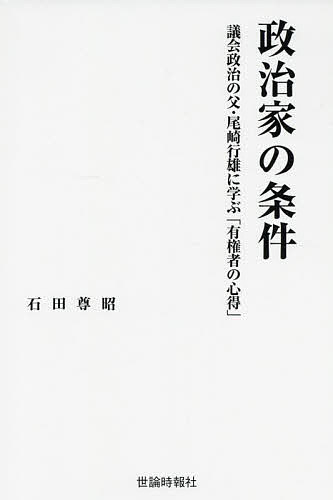Exclusive interview with Kenichi Suzuki, Mayor of Ise City.
Photo in front of late Ozaki’s statue: (left to right) Takako Doi; Mayor Kenichi Suzuki; Ramesh Jaura; Katsuhiro Asagiri. Credit: K Asagiri | INPS Japan
A Young Mayor Upholds the Legacy of Japan’s ‘Holy City’
Feature by Ramesh Jaura and Katsuhiro Asagiri
TOKYO (IDN-INPS) – Kennichi Suzuki is the Mayor of Ise, a city home to the Ise Grand Shrine – the most sacred Shintō shrine in Japan, dedicated to the sun goddess Amaterasu – where Prime Minister Shinzo Abe received the leaders of Canada, France, Germany, Italy, United Kingdom, the United States and the European Union on the occasion of the 2016 annual G7 summit in May. JAPANESE
The city – some 460 kilometres away from Tokyo – was the constituency of the late Yukio Ozaki with the pseudonym ‘Gakudo’, who served in the House of Representatives of the Japanese Diet for 63 years (1890–1953), and is still revered as the “God of constitutional politics” and the “Father of the Japanese Constitutional Democracy“.
The Ozaki Gakudo Memorial House – first established five years after his death and renovated in 2002 – commemorates the achievements of the statesman.
During the 1930s and early 1940s, as an independent politician, he defied the ‘Zeitgeist’ (the defining spirit of the times) and criticised the growing influence of the Japanese military. He was imprisoned during both world wars. But he was hailed as a political hero after World War II – for his relentless commitment to democracy, disarmament and human rights until his death.
His profound commitment to democratic values was underscored by his tolerance for the views of others – so much so that when in 1921 the father of a young man whose attempt to assassinate him was foiled, approached Ozaki to apologize in person. Ozaki responded with a 32-syllable ‘tanka’ poem: “If it was patriotism that drove the young man; My would-be assassin deserves honour for it.”
It was at the entrance to the historic Ozaki Gakudo Memorial House that Mayor Kennichi Suzuki received us for an interview – accompanied by Takako Doi, President of Gakudo Kofu, a not-for-profit organisation launched in 2006 and tasked since 2010 not only with administration of the Ise City-supported Memorial House, but also a wide range of educational activities.
Mayor Suzuki said there was a historical dimension to the G7 summit being held in the Ise-Shima region, also called the Shima Peninsula – comprising areas of eastern Mie Prefecture in or around Ise-Shima National Park, which include the cities Ise, Toba, Shima, and parts of the town of Minami-Ise: Not only because it would be another seven years before Japan hosts G7 summit next time. But also – and that is important – because Ise was the constituency of late Ozaki.
Though there is every reason for Mayor Suzuki to feel proud of having welcomed leaders of six powerful countries, he remains modest and tells us: “Both in political and corporate activities, the bottom line is whether those activities serve the interests of the people.”
As the Mayor of Ise – called the ‘Holy City’ because it hosts the Grand Shrine, also known as Ise Jingu – he said he always keeps at the back of his mind that whatever he does contributes to the values the Grand Shrine embodies and uphold legacy of international peace and human rights for which Yukio Ozaki dedicated his entire life.
This applies to the immigration issue as well. It does not suffice to have international conventions such as the Universal Declaration of Human Rights (UDHR) or the 1951 Convention relating to the Status of Refugees and its 1967 Optional Protocol relating to the Status of Refugees. It is of critical importance that principles enshrined in international agreements are adhered to in practice and human rights are not violated.
“Constant efforts have to be made to make sure that the spirit behind human rights is understood and bequeathed to generations as long as human beings exist on earth.”
For this reason, Mayor Suzuki was impressed by German Chancellor Angela Merkel’s stance and expressed his appreciation to her for the ‘welcome’ sign to a spate of refugees, fleeing civil war in Syria and other Middle East countries.
He was also impressed by U.S. President Barack Obama. Though, he said: “I cannot help comparing two Obamas: Obama when he just became the U.S. President (and was awarded the Nobel Peace Prize soon after) – and Obama now, in the last year of his second tenure in office. He must have gone through tough times all these years.”
While Mayor Suzuki highly appreciates Obama’s decision to visit Hiroshima (nearly 71 years after the U.S. dropped atomic bombs on that city and on Nagasaki), reading news reports from the U.S. and opinions about his administration, his impression is that the president is acting in a difficult political environment.
Nevertheless, he believes that the U.S. President’s speech in Hiroshima on May 27 would open a new chapter. There was much concern in Japan whether a U.S. President would visit Hiroshima while some Hibakusha are still alive.
“With average age of Hibakusha being such that before long we would have to face a situation where a direct account of atomic bomb experience would get increasingly difficult.” Therefore, Obama’s visit to Hiroshima was “highly appreciated as this would allow us to move forward to a new chapter”.
But what does Mayor Suzuki feel as a Japanese national, who has not reached Hibakusha’s age, about opinions that there is no reason to regret the devastation caused by atomic bombs dropped on Hiroshima and Nagasaki, because these were necessary to end the war.
“I do not understand such an argument,” responds Mayor Suzuki. “With the start of a war, there is a moment where things completely change from telling people that killing is a bad thing to praising and even commending people for killing enemies.”
He continued: “However, even during a war, there is a difference between soldiers who are killed on a battlefield while fighting ‘enemy’ soldiers and the civilian population including newly-born babies killed by an atomic bomb or otherwise. By the same token, terrorists infiltrating civilian population and killing innocent children cannot be tolerated. Therefore, I do not understand that there are people who argue in favour of the decision to drop an atomic bomb on the civilian population.”
Asked whether he would have liked Obama to come up with an apology, Mayor Suzuki says: “It is difficult to answer this question. I could imagine that the people of Japan would have been pleased to hear Obama apologise, but I understand that in his position as President he has to represent the U.S. national interest.” In view of this, despite what the people in Japan feel, “we should appreciate the U.S. Presidents’ decision to come to Hiroshima”, he says.
“So you think that it was good that Obama came to Hiroshima and met with Hibakusha though he did not express any regret or apology?” we asked.
“I understand that Obama’s visit to Hiroshima stirred debate in the U.S. and it also left a huge impact here in Japan. I attach utmost importance to the fact that people debated both in Japan and the U.S. Such debates might pave the way to the next stage,” said Mayor Suzuki.
The interview turned out to be a memorable encounter with the 40-year old Mayor who has been in office since November 2009. He expressed his views without resorting to political and diplomatic jargon but fully aware of the legacy of the late Ozaki and what the 2,000-year old Grand Shrine symbolizes. [IDN-InDepthNews – 04 August 2016]
Photo in front of late Ozaki’s statue: (left to right) Takako Doi; Mayor Kennichi Suzuki; Ramesh Jaura; Katsuhiro Asagiri. Credit: K Asagiri | INPS Japan
On this occasion, IDN-INPS also spoke with NPO Gakudo Kofu President Takako Doi about her activities.
A Japanese NGO Keeps Yuki Ozaki’s Spirit Alive
By Ramesh Jaura and Katsuhiro Asagiri
ISE | TOKYO (IDN) – Takako Doi is a warm-hearted, youthful and dynamic woman in her late sixties wedded to the cause of promoting educational and exchange programmes to foster international cooperation and friendship. She is deeply rooted in Japanese culture, and her mind, ears and eyes are open to the global community.

Doi is President of Gakudo Kofu, a not-for-profit organisation (NPO) launched in 2006 and tasked since 2010 with administration of the historic Ozaki Gakudo Memorial House supported by the Ise City, known as the ‘Holy City’ because it hosts Ise Jingu, the Grand Shrine, a Shinto shrine complex centered on two main shrines, Naikū and Gekū, dedicated to the sun goddess Amaterasu. JAPANESE
As we could see for ourselves, thanks due to a guided tour arranged by Takako Doi in May, the shrine buildings in serene settings are made of solid cypress wood and use no nails but instead joined wood. The shrine buildings at Naikū and Gekū as well as the Uji Bridge that stretches across the Isuzu River are rebuilt every 20 years as a part of the Shinto belief of the death and renewal of nature and the impermanence of all things and as a way of passing building techniques from one generation to the next.
Doi and her NPO are keen to contribute to the values the Grand Shrine embodies and uphold the legacy of international peace and human rights for which Yukio Ozaki stood. Also remembered with his pseudonym ‘Gakudo’, Ozaki served in the House of Representatives of the Japanese Diet for 63 years (1890–1953), and is still revered as the “God of constitutional politics” and the “Father of the Japanese Constitutional Democracy“. Ise was his electoral constituency.
In 1994, with the aim to communicate the visions of Gakudo Ozaki (Yukio Ozaki), an organization called “Gakufu-kai” – with “Kofu” as its women’s division – was founded and it has since been engaged in grass root educational activities by organizing lectures and study sessions as well as international friendship and exchange programmes.
Explaining ‘Gakudo Kofu’, Doi says, while ‘Gakudo’ is derived from the pseudonym of Yukio Ozaki, ‘Ko’ originates from one of two Chinese characters, which constitutes the first name of Yukika Sohma, the third daughter of Yukio Ozaki, “who always gave us advice and inspiration for our activities”.
Gakudo Kofu organises close to the birthday of late Ozaki in December a memorial event titled “Festival of the birth of Gakudo Ozaki”, which provides the framework for lectures by researchers and other knowledgeable persons.
“We also organize events for children. We invite experts to talk to children about the future they would shoulder,” says Doi. “Experts include members of city council. This programme constitutes a platform for our activities enabling us to look back on achievements of Yukio Ozaki and thus get acquainted with his high ideals,” she adds.
With a view to conveying the spirit of late Yukio Ozaki to children who are the future not only of Ise City but also of Japan, Gakudo Kofu launched a ‘book report competition’ in 1994 for elementary and junior high school students in Ise and the surrounding area: by encouraging students to choose any book about the life of Gakudo Ozaki, write about it and submit the ‘report’ to Gakudo Kofu for review.
“We have so far organized 22 book report competitions,” says Doi. “In the first year, there were only 13 entries. By way of promoting activities supported by NPO Gakugo Kofu’s members and with the backing of local schools, the number of entries has gradually increased to a total of about 6,500.”
Best book reports are honoured with awards such as the ‘Mayor Award’, ‘President of the ‘Municipal Assembly Award’, and ‘Education Board Award’ on the occasion of late Yukio Ozaki’s annual birthday festival. This has become a major annual event in Ise City.
Ise is well known for magnificent cherry trees too. Cherry blossom trees along the Miyagawa river dyke in Ise have been designated as some of the one hundred most beautiful cherry blossom viewing spots in Japan. Ozaki Memorial House is located on the banks of the Miyagawa river. Several cherry blossom trees in the garden of the memorial hall, came back home from Washington D.C. where their ancestral cherry blossom trees donated by Yukio Ozaki were originally planted 100 years ago.
“Motivated by my wish to have children enjoy the cherry blossom season, which constitutes a charming tradition of Ise, and to have children feel the beauty and the grandeur of nature as well as think about people associated with cherry blossoms such as Yukio Ozaki and nurture their sense of love for their community, we have been organizing Sketching Cherry Blossom competitions for elementary school children. A growing number of elementary school children from Ise City is participating in such competitions,” notes Doi.
Taking a cue from the opportunity of a visit to Gakudo Ozaki Memorial House by a goodwill delegation including “the U.S. Cherry Blossom Queen” 21 years ago, Gakudo Kofu selected “Dogwood Queen” among participants from Ise and the surrounding area. “Dogwood Queen” was elected in Ise with a view to furthering friendship with the U.S. and was named after dogwood trees donated by the U.S. president to Japan in reciprocation for Cherry Blossoms in Washington D.C. which had been earlier donated by Yukio Ozaki, the then Mayor of Tokyo.
Since 1998, six Dogwood Queens have been elected and they have visited Washington D.C. participating in exchange programmes with civil organizations, visiting administrative offices, and participating in the National Cherry Blossom Festival, joining a parade in the U.S.
On the occasion of the 100th anniversary of donating Cherry blossom trees to the U.S. the NPO headed by Doi accompanied by a Dogwood Queen, two Vice Queens, 3 Friendship Ambassadors, and one Goodwill Ambassador visited the U.S. during the National Cherry Blossom Festival in April 2012 and were welcomed warmly.
At the grand ball where the U.S. Cherry Blossom Queen is selected, Dogwood Queen (from Ise) is unveiled along with Cherry Blossom Princesses representing each state of the U.S. The U.S. Cherry Blossom Queens elected at this party during the festival have been visiting Japan every year and since 1995 Ise too. On such occasions, they also visit the Grand Shrine, call on the Mie Prefecture’s Governor as well as on Ise City’s Mayor, apart from visiting Gakudo Ozaki Memorial House and Mikimoto Pearl Island. NPO Gakudo Kofu has been acting as host organization for the U.S. delegation.
At parades during the National Cherry Blossom Festival in April in Washington D.C., Dogwood Queens and Vice Queens “From Ise Japan” march together receiving applause from people lining the streets.
Doi recalls that the NPO headed by her brought 24,000 paper cranes to participate in the festival during the Iraq war in 2003. “We are proud of this decision. Our activities came to be known in the U.S. and NPO Gakudo Kofu received certificates of commendation from many people including Presidents Clinton and Bush.”
Doi recalls that Gakudo Ozaki was 74 when he wrote in a poem: “On Life’s stage, always be prepared for the future.” She adds: “We, members of NPO Gakudo Kofu, with these words firmly in our mind, are determined to spread Yukio Ozaki’s message not only to the Ise City but also to Japan and beyond to the world at large for all future transcending time.”
Her dedication to promoting the Ozaki Spirit was duly honoured on October 28, 2016 when Tadamori Oshima, Speaker of the House of Representatives in the Diet, who also chairs the Ozaki Yukio Memorial Foundation, bestowed on Doi a special certificate of appreciation at the Foundation’s 60th anniversary event at the Parliamentary Memorial Hall. [IDN-InDepthNews – 01 December 2016]
Read the news feature in Japanese: 尾崎咢堂の精神を今日に伝える日本のNGO














